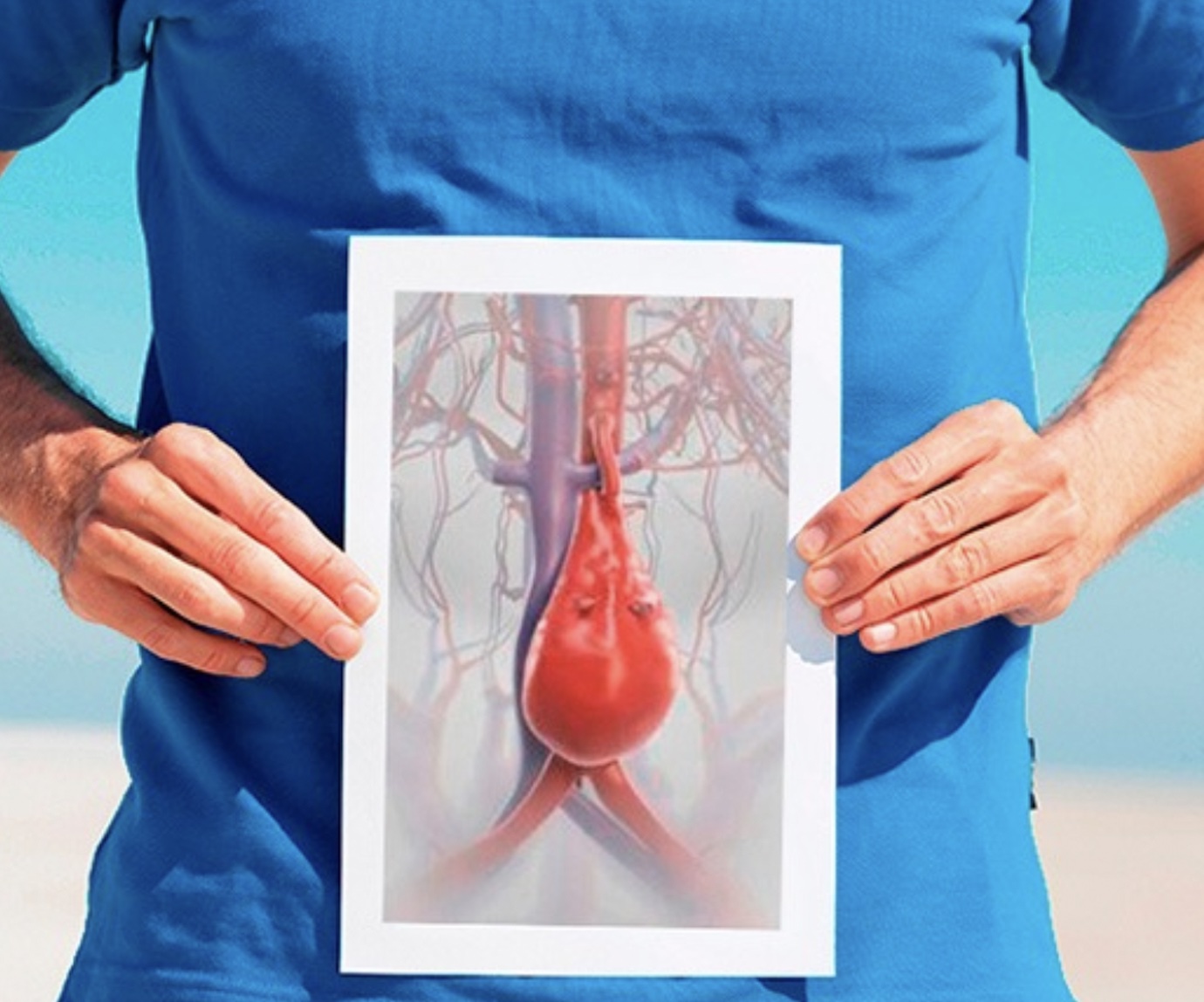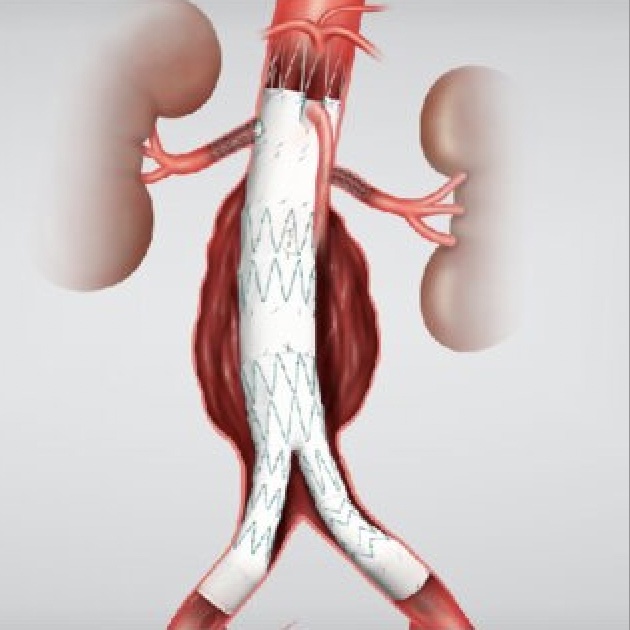What is an Abdominal Aortic Aneurysm?
An aneurysm is a localized and permanent dilation that occurs in the walls of the arteries. This abnormal dilation is caused by the weakness of the wall of an area of the blood vessel.
Aneurysms arise when the wall of an artery is diseased and weakened. Arteries deal with very high blood pressure and need strong, elastic walls to keep from giving up, even when there is an increase of blood pressure. If a segment of an artery for some reason becomes weaker, blood pressure will slowly cause dilation in that region, and in the future, may eventually reach its limit of expansion and break.
Aneurysms can appear in any artery in our body, but mainly manifest in the abdominal aorta, so they are called Abdominal Aortic Aneurysm (AAA).

What are the causes and risk factors for Aneurysms?
Most AAAs are the result of atherosclerosis, a chronic degenerative disease of the artery wall, in which fat, cholesterol, and other substances build up and weaken the walls of arteries
The most important risk factors for AAA include family history, smoking, long-standing high blood pressure, obesity, males have a greater predisposition and age between 65 and 75 years.
Men with a family history of AAA should be examine at age 60. There are other diseases that are related to the formation of AAA; Such as Marfan syndrome, Vasculitis, among others.
What are the symptoms ?
Abdominal aortic aneurysms usually develop slowly, over a period of many years, and rarely cause obvious symptoms. In general most people who have AAA do not know they have it, many are diagnosed by accident. So the studies to arrive at the diagnoses are the Ultrasound of abdomen, Abdominal Angiotomography (AngioCAT) and Magnetic Resonance (MRI)
Occasionally, especially in thin patients, you may feel a pulsating sensation in the abdomen. The larger an aneurysm grows, the greater the chance of it bursting or breaking.
If an aneurysm expands rapidly, ruptures or leaks, the following symptomatology may suddenly occur:
- Severe and persistent abdominal pain, or back pain, sweating
- Dizziness, nausea and vomiting
- Rapid heart rate
- Shortness of breath
- Low blood pressure.
How are AAAs treated?
Ideally, it is to do the treatment electively before the AAA becomes at risk of rupture and become an emergency.
Not all aneurysms merit immediate treatment, as it depends on the size and risk factors of the patient.
Patients with aneurysms that are less than five centimeters (5cm) in diameter are usually monitored with ultrasound or AngioCAT every 6 to 12 months and are advised to:
- Give up smoking
- Control high blood pressure
- Lower cholesterol.

Surgical treatment may be advisable for patients with aneurysms who:
- Are more than 5 centimeters (5 cm) in diameter
- Are growing rapidly
- Have imminent leakage or rupture data and there is related symptomatology
There are two treatment options:

Traditional Surgical Repair (Open Surgery): It consists of the removal of the entire aneurysmal segment and the diseased Aorta is replaced by a graft. It entails a certain risk but is successful in most cases.
Endovascular Surgery: This procedure is less invasive. In this technique, a graft (stent) is carried to the site of the aneurysm through catheterization of an artery of the lower limbs, usually the femoral artery. The affected area is covered by the inside of the artery. It also has very precise indications about which patients could benefit from this therapy.
At CLINICA CARDIOVASCULAR we are at your service to offer care and resolve all your doubts.


